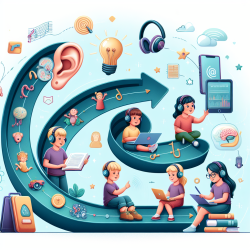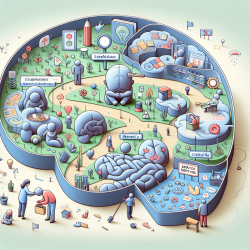The study "Long-Term Language Development in Children With Early Simultaneous Bilateral Cochlear Implants" by Wie et al. (2020) offers crucial insights into the language development trajectories of children who receive early simultaneous bilateral cochlear implants (CIs). This longitudinal research provides a comprehensive view of the language outcomes and the factors influencing them over the first six years post-implantation.
For practitioners, understanding these findings can significantly enhance intervention strategies and support mechanisms for children with CIs. Here are the key takeaways and actionable insights:
Key Findings
- Initial Improvement: The study observed that the language abilities of children with CIs gradually improved and became comparable to those of their normal-hearing (NH) peers within the first four years post-implantation.
- Reemergence of Language Gaps: Between four to six years post-implantation, specific language challenges reemerged, particularly in receptive vocabulary and expressive grammar. These gaps highlight the need for continued and targeted language intervention.
- Influential Factors: The research identified that better speech recognition abilities, earlier age at CI activation, and higher maternal education levels were significant predictors of better language outcomes.
Actionable Insights for Practitioners
To optimize the language development of children with CIs, practitioners should consider the following strategies:
1. Early and Continuous Intervention
Given that early CI activation is associated with better language outcomes, practitioners should advocate for and facilitate early implantation wherever possible. However, continuous and intensive language support is crucial, especially as children approach school age when new language challenges may emerge.
2. Focus on Receptive Vocabulary and Expressive Grammar
The study found that receptive vocabulary and expressive grammar were particularly challenging areas. Practitioners should develop targeted interventions to address these specific language domains, using evidence-based practices and regular assessments to monitor progress.
3. Parental Involvement and Education
Higher maternal education was linked to better language outcomes, suggesting that parental involvement plays a critical role. Practitioners should engage parents in the therapy process, providing them with the tools and knowledge to support their child's language development at home.
4. Long-Term Monitoring
The reemergence of language gaps highlights the need for long-term monitoring and support. Practitioners should schedule regular follow-ups and be prepared to adjust intervention strategies based on the child's evolving needs.
Encouraging Further Research
This study underscores the importance of long-term, detailed investigations into the language development of children with CIs. Practitioners are encouraged to stay informed about ongoing research and consider participating in or initiating studies that further explore effective intervention strategies.
To read the original research paper, please follow this link: Long-Term Language Development in Children With Early Simultaneous Bilateral Cochlear Implants










